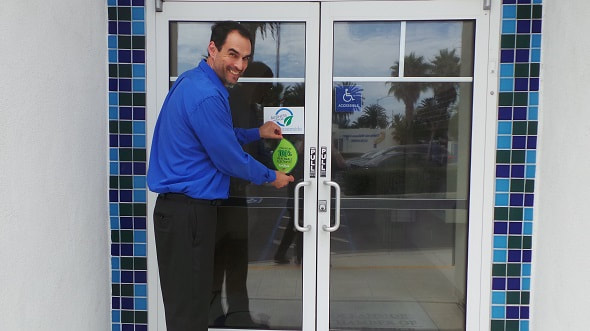|
by Tina F. Edwards, MD, World of Wellness, Healing Care
When you pay for something you expect to get something out of it. But, are you getting anything from the Healthcare you are buying for your employees? Are they healthier? Do they get good care? Do they have fewer sick days? Does any benefit accrue to you, the employer, for paying for this increasingly expensive service? Why are you paying for healthcare, anyway? When did employers become responsible for their employees health and why? Essentially, it was an accident of history and a change in the tax code. During World War II, one way to attract laborers to essential war-time factory work was to offer better fringe benefits. One of those was health-insurance. In 1943, the IRS decided that employer-based-healthcare would be tax free—and thus the standard of employer funded health-insurance was born.[i] Today, you probably pay a monthly amount for each of your employees to cover their health-insurance. That insurance, in turn, covers some or all of their health expenses. Usually, to keep costs low, you use a Health Maintenance Organization (HMO), perhaps with a large co-pay for each visit, or a PPO with a very large deductible. For that, they can potentially see their doctor after making an appointment for 1-2 weeks in advance. Maybe, if they are lucky, they can see some other provider that day or the next day if they are actually sick—and when do they call their doctors for an appointment? When they are well? The focus is rarely on preventing illness, but rather responding to it, maybe with pills, or hospitalization, or expensive testing. For each of those, they will pay a co-pay, usually ranging from $15 to $70 dollars, or more, for an ER visit when they can’t get in to see a regular doctor or urgent care. What, you may ask, is the alternative? There is a new movement among primary care doctors and their patients today called Direct Primary Care (DPC). Born of the idea that it is Primary Care that is the real driver of health, a growing wave of doctors have decided to opt out of the insurance game, and take their services directly to the patient. DPC patients pay a monthly fee to their doctor, usually less than $99 a month and averaging $50-$70/monthly, per patient, for most practices. Fees are usually based on age and family size. A DPC doctor limits their practice to less than a thousand patients, sometimes as little as three or four hundred. DPC doctors are available for same and next-day visits, texting, phone conversation, twitter messages, Facebook messages and even video chatting. DPC doctors can spend 30 minutes or an hour with patients, and can take all the time needed to do the right thing. DPC doctors recognize that the current insurance model for Primary Care doesn’t serve the doctor or the patient. Insurance companies derive their revenue from the stream of payments from employers and insured. It is to their benefit to see that patients get as little care, in as little time, as possible, so that they can keep the most money for the company. They have to build nice buildings and offices to house all the administrators and rule-writers they have to pay to decide what patients can and can’t get from their doctors. In short, they get between the doctor and the patient, and they make money doing it. DPC doctors know that good primary care can take care of 90%, or more, of everything patients need, and primary care is where the real work of health and wellness occur. What prevents this level of care in most traditional insurance-based doctors’ offices? First, the doctors have no time. To support the staff they need to comply with insurance and Medicare regulations, doctors have to have panels of 3000-5000 patients. That means they need to see thirty or more, patients, per day. That is why appointments are limited to seven to ten minutes on average, and doctors don’t listen to their patients. Second, they’ll do what they get paid to do. What they get paid to do is write their chart in such a way that their coders can code it “correctly” to get the most money out of the insurance company. They get paid for referring to specialists; they don’t get paid for listening to the patient long enough to figure out what is going on without that expensive referral. It sounds strange, but it’s true. Nothing in the current structure actually pays the doctor to sit and listen to the complex human beings that are their patients, and try to help them. Doctors don’t get paid to talk about grief, isolation or anxiety. They don’t get paid to talk about diet and exercise, and their role in not just being healthy, but feeling healthy. They don’t get paid to talk to patients about their goals and aspirations, and how doctors can help. In short, doctors aren’t being paid to do what their patients really need them to do, which is help them to live healthy and fulfilling lives. Direct Primary Care is a way to return to the roots of medicine, when the local doctor was a local resource for all kinds of health issues, not just strictly for handing out pills and referrals to other doctors. DPC doctors can help your business by keeping your employees healthy, fit, and energized. A healthy workforce is a productive workforce. If you’re among the growing number of employers who self-insures, DPC can help you keep those costs down by limiting referrals, expensive studies and ER visits to what is really needed, not just to what is convenient for the doctor overwhelmed by more than 30 patients a day. When one ER visit for a simple problem can cost your employees thousands of dollars, DPC pays for itself just in avoiding those expensive visits. When DPC doctors focus on your employees’ health, and getting them to work, ready to work, and keeping the contagious away from work, DPC pays for itself in productivity. When you combine DPC with a health-care-sharing program like Liberty Health Share, or low-cost policies that cover hospitalization and more catastrophic costs, DPC pays for itself by saving you money directly on employee health costs. Finally, when you are able to offer your employees excellent primary care for themselves and their entire family, at very low costs, DPC pays for itself by making you a more competitive employer. If you are frustrated by the current Health-care insurance system and looking for an alternative for yourself and your employees, look into Direct Primary Care. You can change your business to a better model, one that works for you and your employees. Information Resources: http://www.dpcfrontier.com/ http://www.businessinsider.com/direct-primary-care-a-no-insurance-healthcare-model-2017-3 http://www.aarp.org/health/health-insurance/info-08-2013/direct-primary-care.html http://www.heritage.org/health-care-reform/report/direct-primary-care-innovative-alternative-conventional-health-insurance Local DPC practices World of Wellness, Dr. Tina F. Edwards, www.wowhealingcare.com, reevoMD, Dr. Gordon Luan, www.reevomd.com, Encinitas Personal Healthcare, Dr. Marty Schulman, http://www.martyschulmanmd.com [i] Accidents of History Created the US Health System. Blumberg, Alex. Davidson, Adam, http://www.npr.org/templates/story/story.php?storyId=114045132 Today, Oceanside Chamber announced that its facility is running on 100% renewable energy thanks to San Diego Gas & Electric’s new EcoChoice program. The new, environmentally-friendly program is available to all residents and the Oceanside Chamber is hoping to set the stage for a more sustainable future.
By signing up for EcoChoice, participants can increase the amount of renewable energy powering their businesses or homes all while reducing their carbon footprint and their impact on climate change. |
Categories
All
Archives
December 2023
|
|
|
|
|



 RSS Feed
RSS Feed
